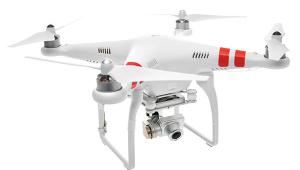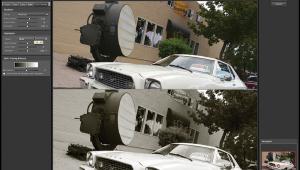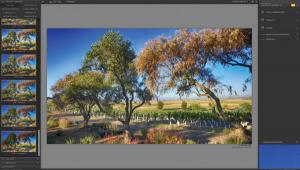The Dog Ate My Homework…Again!
"He felt that his whole life was some kind of dream and he sometimes wondered whose it was and whether they were enjoying it."--Douglas Adams
In the April 2006 issue of Shutterbug I recounted a story about methods used to rescue image files from a corrupted memory card. In response I received a couple of useful suggestions from readers: The first was from a reader asking why I didn't just connect the camera to the computer when I could still see the images. As the great Homer Simpson once said, "Doh!" So when that same problem happened to me in the wilds of Bryce Canyon, I connected the camera (this time a preproduction Pentax K100D) to my iBook and easily moved the files onto the hard drive. Another reader suggested I try the file recovery software on a Windows computer instead of a Mac G4. Truth be told, I did, but it didn't work any better for this particular card. I didn't mention that fact because I assumed (and maybe I'm wrong here) that most readers have only one kind of computer and don't mix and match operating systems as I do.
 |
|
|
Yellow Submarine
While working on a shorter than normal deadline to complete The Magic Lantern
Guide to the Pentax K100D I found my Power Macintosh G4 had not saved the latest
version of Chapter 4 or any part of Chapter 5. Whatever disk failure caused
this hiccup happened just before I saved a back-up copy to my external FireWire
hard drive. So, you guessed it, the backup was crap, too. When combined with
a growing collection of image files backed up in what might be called a helter-skelter
fashion, I decided it was time to do something. That "something"
was installing the Yellow Machine (www.yellowmachine.com)
I picked as Best of Show at PMA 2006.
 |
The Yellow Machine is available in configurations from .5TB ($549) to 2TB ($2499) and is a network storage "appliance" that provides the kind of storage, security, and networking once only found in Fortune 500 data centers. Now it sits on my desktop next to an Epson Perfection 4870 scanner. Designed for the needs of small studios and home users, the feature that appealed to me was fail-safe storage using the redundancy of RAID.
RAID: What's In A Name?
In the June 2006 issue, I defined RAID as "Redundant Array of Inexpensive
Drives." A reader wrote Shutterbug's Managing Editor complaining
this was incorrect. It was, he insisted, "Redundant Array of Independent
Disks." Both definitions are generally accepted as correct and I quoted
the one used by the manufacturer in question. Does it make a difference? I'll
leave that decision up to you. This month's Digital Innovations introduces
you to two different RAID solutions that let you store the same data in different
places on multiple hard disks, thus improving the Mean Time Between Failures
(MTBF). The more images that you have to store and access, the more important
MTBF becomes no matter how you define RAID.
Set up wasn't plug-and-play, but wasn't difficult. While I connected
it to a network that includes a Compaq Presario and an Apple Mac G4, set up
requires a Windows computer but the network can be configured for Mac OS computers
only. This compact yellow box provides disk scrubbing, automated backup, and
a built-in Firewall/VPN (Virtual Private Network) router for remote access.
(If you're going to use this feature, ask your broadband supplier for
a fixed IP address.) I didn't use the built-in router because I already
had a wireless router. After installation, a RAID appears as a single hard disk
to your system.
Note: Before you think I've gone and gotten real geeky
with you, keep this in mind: If this column was about traditional photography
it's inevitable that at some point I would talk about image storage and
retrieval. That discussion might center on storage media such as archival polypropylene
pages and metal cabinets for storing your 35mm slides. Well, Bunky that's
all this (and the next product, too) is...
 |
The Great RAID
Sabio's (www.sabioproducts.com)
CM-4 is designed for professional photographers and supports Mac OS and Windows
computers. Capacities range from 1TB ($999) to 2TB ($2200). It can be set to
RAID 1 (mirroring) in which two of the four hard drives are replicas of the
other two or RAID 5, which provides recoverable storage. If any one of the four
hard drives fail, data can be recovered from the other three. Automatic backup
can be configured to back up files from any and all computers
on the network, without user intervention. The unit's hard drives are
hot swappable and securely mounted on removable drive trays. The device can
be connected to a network using an Ethernet connection and has two USB 2.0 ports
for additional external storage.
- Log in or register to post comments

















































